Finding the right words to communicate thoughtfulness and care can make a big difference in professional and personal conversations. Saying “No Pressure” is one way to show patience and understanding, but using thoughtful alternatives can make your message feel more personal, professional, and meaningful. In this article, we’ll explore 20 professional ways to say “No Pressure” along with examples, scenarios, tone, and detailed explanations to help you communicate effectively.
What Does “No Pressure” Mean?
“No Pressure” is a phrase used to let someone know they are not being forced to take immediate action or feel stressed about a task. It implies patience, understanding, and flexibility in a situation where someone might feel obligated or anxious.
Is It Professional/Polite to Say “No Pressure”?
Yes, saying “No Pressure” can be professional and polite when used in the right context. It signals empathy and understanding, letting the other person know that their comfort and timing are important. However, it’s best to phrase it professionally in emails, meetings, or work-related messages to avoid being too casual.
Synonyms For “No Pressure”
- Take Your Time
- Whenever You’re Ready
- At Your Convenience
- No Rush
- When You Have a Moment
- Whenever You Find the Time
- No Need to Hurry
- Don’t Feel Pressured
- Whenever Suits You
- There’s No Rush
- At Your Leisure
- When It Works Best for You
- No Immediate Action Required
- At Your Own Pace
- When Convenient for You
- Whenever Feels Right
- Don’t Feel Rushed
- At a Comfortable Pace
- When It’s Best for You
- Whenever You Can
1. Take Your Time
Meaning: Allowing someone to complete a task or respond without urgency.
Scenario: Sending a follow-up email to a colleague about a report.
Tone: Supportive, understanding, and patient.
Examples:
- “Take your time reviewing the draft, there’s no rush at all today.”
- “Please take your time finishing the project, quality matters most.”
- “Take your time responding; I know you have a busy schedule.”
- “No rush, take your time thinking through these options carefully.”
- “Feel free to take your time reviewing the details before replying.”
Explanation: This phrase reassures the person that they can manage their work without feeling stressed, emphasizing patience and respect for their pace.
2. Whenever You’re Ready
Meaning: Giving someone full freedom to act at their own pace.
Scenario: Asking for feedback on a proposal or document.
Tone: Polite, encouraging, and flexible.
Examples:
- “Send me your thoughts whenever you’re ready, no hurry.”
- “Whenever you’re ready, I’d love to hear your insights.”
- “Take your time and respond whenever you’re ready to discuss.”
- “I’ll be here whenever you’re ready to share your opinion.”
- “Whenever you’re ready, we can go over the presentation together.”
Explanation: This phrase expresses patience and reduces stress by emphasizing that there is no urgency.
3. At Your Convenience
Meaning: Allowing the person to act when it suits them best.
Scenario: Scheduling a meeting or task submission.
Tone: Respectful and professional.
Examples:
- “Please review the document at your convenience this week.”
- “Feel free to respond at your convenience; I’m not in a rush.”
- “You can submit the report at your convenience, no problem.”
- “Check the details at your convenience and let me know your thoughts.”
- “At your convenience, could you provide feedback on this proposal?”
Explanation: This is a polite professional way to indicate flexibility while respecting the other person’s schedule.
4. No Rush
Meaning: Indicates there’s no immediate urgency for action.
Scenario: Requesting a task update from a teammate.
Tone: Friendly, calm, and relaxed.
Examples:
- “No rush, I just wanted to make sure you received the files.”
- “Take your time; no rush on sending the final draft.”
- “No rush at all, I understand you have multiple priorities.”
- “You can review the materials, no rush, whenever you have time.”
- “No rush, feel free to get back to me when convenient.”
Explanation: Helps reduce anxiety by making the timeline flexible without pressuring anyone.
5. When You Have a Moment
Meaning: Asking someone to do something when they are free, without urgency.
Scenario: Following up on a non-critical request.
Tone: Considerate, polite, and professional.
Examples:
- “Could you check this report when you have a moment?”
- “Please review the presentation when you have a moment, thanks.”
- “When you have a moment, I’d love your feedback on this idea.”
- “Check the attached files when you have a moment, no hurry.”
- “When you have a moment, please confirm the schedule works for you.”
Explanation: It communicates patience and respect for the person’s current workload.
6. Whenever You Find the Time
Meaning: Providing flexibility based on someone’s availability.
Scenario: Asking for a non-urgent favor.
Tone: Empathetic, polite, and relaxed.
Examples:
- “Whenever you find the time, please review the document.”
- “I’ll wait for your response whenever you find the time.”
- “Whenever you find the time, let’s discuss the plan together.”
- “No hurry, complete the task whenever you find the time.”
- “Whenever you find the time, share your suggestions with me.”
Explanation: Shows that you value their time and aren’t imposing pressure.
7. No Need to Hurry
Meaning: Explicitly communicates that rushing isn’t necessary.
Scenario: Reminding a client about a non-urgent action.
Tone: Friendly and reassuring.
Examples:
- “No need to hurry; your input is valuable whenever ready.”
- “Take your time, there’s no need to hurry with the report.”
- “No need to hurry, the deadline is flexible.”
- “Please review this document, no need to hurry at all.”
- “No need to hurry, I appreciate your careful consideration.”
Explanation: Helps reduce stress and encourages thoughtful, careful responses.
8. Don’t Feel Pressured
Meaning: Directly reassuring someone that pressure is not expected.
Scenario: Offering assistance or advice without expectation.
Tone: Supportive, gentle, and professional.
Examples:
- “Don’t feel pressured to respond immediately; take your time.”
- “You’re welcome to review this, don’t feel pressured at all.”
- “Don’t feel pressured; your input is important whenever ready.”
- “Feel free to decline if needed, don’t feel pressured.”
- “Don’t feel pressured, I just wanted to share the information.”
Explanation: Clearly communicates freedom from obligation, reducing potential stress.
9. Whenever Suits You
Meaning: Emphasizing flexibility according to the person’s schedule.
Scenario: Scheduling meetings or sending files.
Tone: Professional and accommodating.
Examples:
- “We can discuss the proposal whenever suits you best.”
- “Send your comments whenever suits you; no urgency required.”
- “Please respond whenever suits you this week.”
- “We can arrange the meeting whenever suits you.”
- “Whenever suits you, we can go over the plan together.”
Explanation: Shows respect for others’ preferences and time.
10. There’s No Rush
Meaning: Similar to “No rush,” emphasizes patience.
Scenario: Following up on ongoing tasks.
Tone: Calm, understanding, and polite.
Examples:
- “There’s no rush, just wanted to check in on progress.”
- “You can complete the task at your pace; there’s no rush.”
- “There’s no rush on this, quality is more important.”
- “Feel free to respond later; there’s no rush at all.”
- “There’s no rush, take your time finishing the details carefully.”
Explanation: Reiterates that timing isn’t critical, encouraging thoughtful action.
11. At Your Leisure
Meaning: Suggesting someone can act when it’s convenient for them.
Scenario: Asking for feedback or non-urgent actions.
Tone: Respectful, polite, and professional.
Examples:
- “Review the proposal at your leisure and share your thoughts.”
- “You can read this report at your leisure; no urgency required.”
- “At your leisure, please provide your feedback.”
- “Take a look at these documents at your leisure.”
- “At your leisure, we can discuss this further.”
Explanation: A refined, professional way to communicate flexibility and patience.
12. When It Works Best for You
Meaning: Indicating flexibility according to the person’s schedule.
Scenario: Planning meetings or tasks collaboratively.
Tone: Considerate and professional.
Examples:
- “Let’s schedule the meeting when it works best for you.”
- “Please respond to this email when it works best for you.”
- “We can review the project together when it works best for you.”
- “Take your time and reply when it works best for you.”
- “Complete the task when it works best for you; no rush.”
Explanation: Shows empathy for the other person’s timing and priorities.
13. No Immediate Action Required
Meaning: Clarifying that the task does not need urgent completion.
Scenario: Sending a non-urgent update or task.
Tone: Calm, professional, and clear.
Examples:
- “No immediate action required; review whenever convenient.”
- “This is for your information only; no immediate action required.”
- “No immediate action required, but please provide feedback when ready.”
- “Please note this update, no immediate action required.”
- “No immediate action required, take your time reviewing.”
Explanation: Helps reduce urgency, preventing unnecessary stress.
14. At Your Own Pace
Meaning: Encouraging someone to proceed without feeling rushed.
Scenario: Guiding a colleague on a learning or project task.
Tone: Supportive and patient.
Examples:
- “Complete the training at your own pace; no deadlines imposed.”
- “You can finish the report at your own pace, no pressure.”
- “Take your time and work at your own pace.”
- “Review the material at your own pace; quality matters.”
- “Work at your own pace, and let me know if you need help.”
Explanation: Emphasizes patience and flexibility for optimal results.
15. When Convenient for You
Meaning: Allowing someone to act according to their schedule.
Scenario: Assigning tasks or requesting feedback.
Tone: Polite, professional, and accommodating.
Examples:
- “Please provide feedback when convenient for you.”
- “Send me the details when convenient for you.”
- “We can arrange the discussion when convenient for you.”
- “Review the document when convenient for you.”
- “Complete the assignment when convenient for you; no rush.”
Explanation: Professional phrasing that communicates empathy and respect.
16. Whenever Feels Right
Meaning: Encouraging action when the person feels comfortable.
Scenario: Giving someone freedom to respond on their own terms.
Tone: Empathetic, gentle, and professional.
Examples:
- “Share your input whenever feels right for you.”
- “You can submit your thoughts whenever feels right.”
- “Whenever feels right, we can discuss your feedback.”
- “Take your time; act whenever feels right for you.”
- “Whenever feels right, let’s go over the project together.”
Explanation: Adds warmth and reduces pressure, focusing on comfort and timing.
17. Don’t Feel Rushed
Meaning: Direct reassurance against urgency or stress.
Scenario: Providing instructions or tasks with flexible timelines.
Tone: Calm, reassuring, and understanding.
Examples:
- “Don’t feel rushed; take the time you need to complete this.”
- “You can work on this project; don’t feel rushed at all.”
- “Don’t feel rushed; careful review is more important.”
- “Take your time and don’t feel rushed responding.”
- “Don’t feel rushed, your thoughtful input is appreciated.”
Explanation: Highlights patience and encourages high-quality work without stress.
18. At a Comfortable Pace
Meaning: Suggesting someone proceed without haste.
Scenario: Learning new software or completing a task.
Tone: Encouraging, professional, and empathetic.
Examples:
- “Go through the training at a comfortable pace.”
- “Complete the report at a comfortable pace; accuracy matters.”
- “Review the presentation at a comfortable pace, no pressure.”
- “Work at a comfortable pace to ensure quality results.”
- “Take your time and proceed at a comfortable pace.”
Explanation: Promotes confidence, patience, and careful work.
19. When It’s Best for You
Meaning: Allowing someone to act when it aligns with their priorities.
Scenario: Scheduling discussions or submitting work.
Tone: Respectful and professional.
Examples:
- “Send the updates when it’s best for you.”
- “We can schedule the call when it’s best for you.”
- “Complete the task when it’s best for you; no pressure.”
- “Please respond when it’s best for you.”
- “Review the materials when it’s best for you.”
Explanation: Shows understanding and prioritizes the other person’s timing.
20. Whenever You Can
Meaning: Indicating full flexibility and no pressure.
Scenario: Asking for input or completing tasks.
Tone: Casual yet professional, considerate.
Examples:
- “Send me the report whenever you can.”
- “Review the presentation whenever you can.”
- “Whenever you can, please provide your feedback.”
- “Complete the assignment whenever you can.”
- “Whenever you can, let’s meet to discuss the plan.”
Explanation: Simple and flexible phrase suitable for both professional and casual contexts.
Conclusion
Using alternatives to “No Pressure” allows you to communicate with empathy, professionalism, and warmth. These 20 options help convey patience, respect, and understanding in a professional setting, making your messages feel more thoughtful and considerate. Choosing the right phrase can strengthen relationships and encourage positive, stress-free communication.
FAQs
1. Is it okay to use “No Pressure” in emails?
Yes, especially if paired with professional alternatives like “At Your Convenience” or “Whenever You’re Ready.”
2. Can “No Pressure” sound unprofessional?
It can if used casually with senior clients; it’s better to use alternatives in formal contexts.
3. What’s the best alternative for urgent tasks?
For urgent tasks, phrases like “At Your Convenience” or “Whenever Feels Right” work best if you still want to be polite but stress urgency minimally.
4. How many alternatives should I use in professional communication?
Use one clear, empathetic alternative per message to avoid confusion and maintain politeness.
5. Can these phrases work in personal conversations?
Absolutely! They make your communication thoughtful and stress-free even in informal settings.
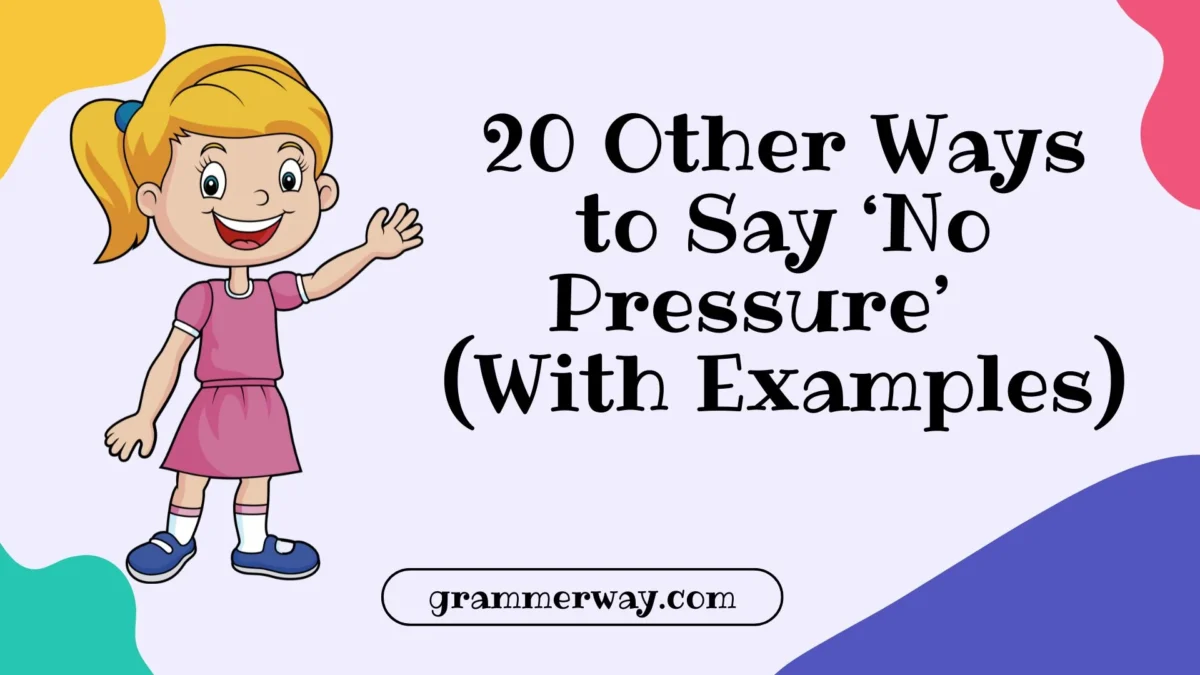
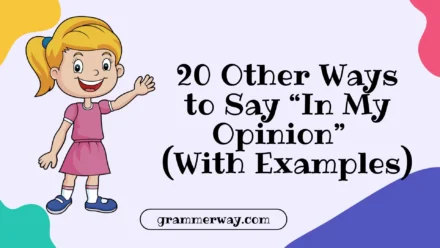
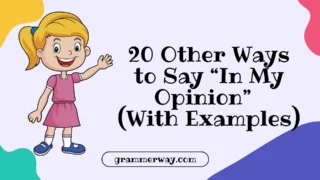

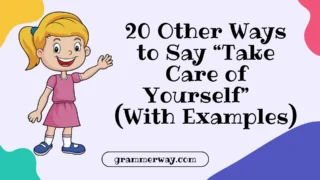
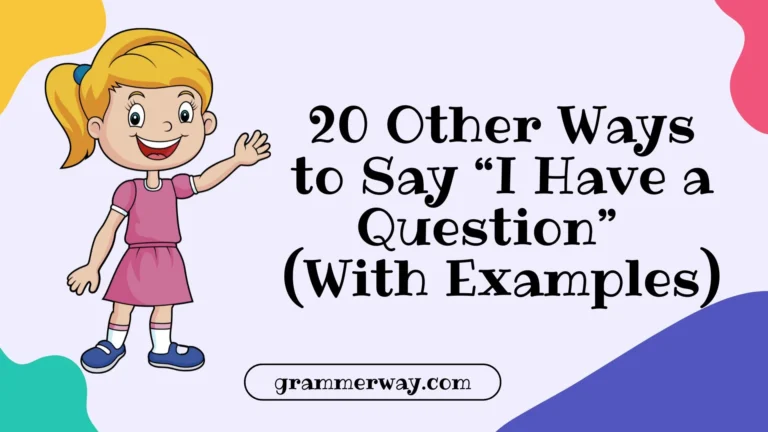

Leave a Comment